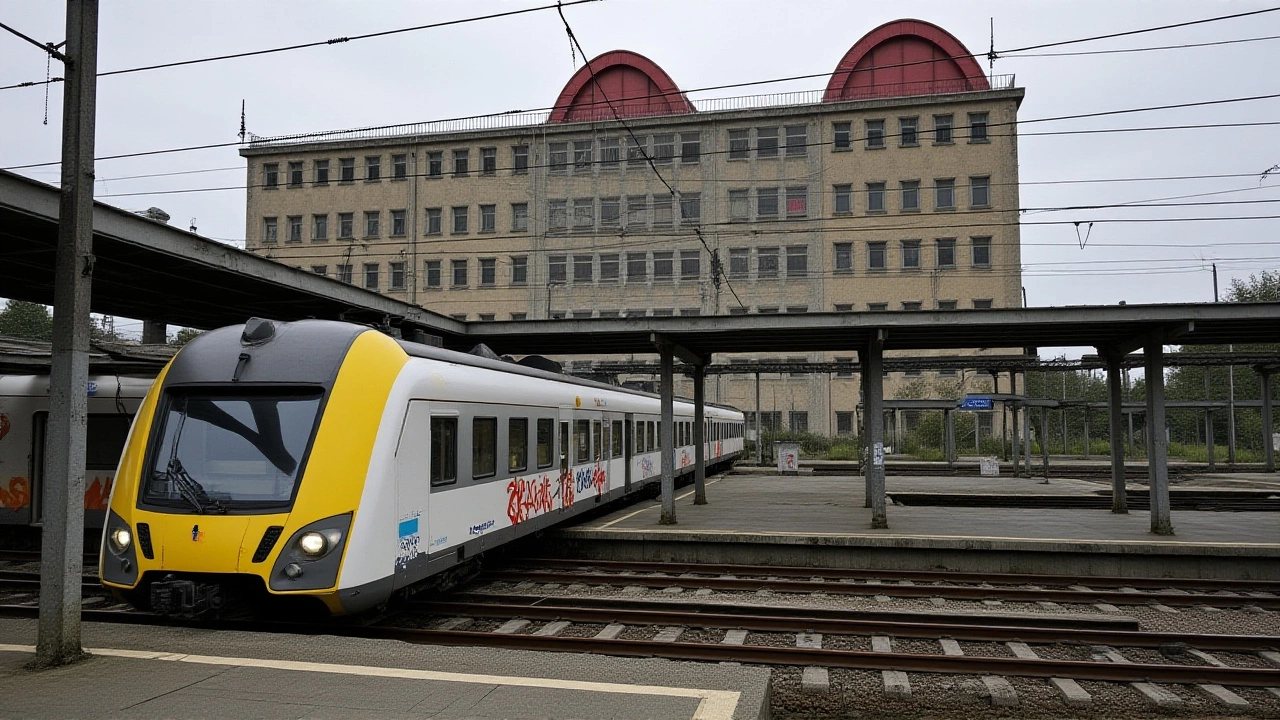When air traffic controllers at Los Angeles International Airport walked off the job last week—not out of protest, but because they couldn’t afford to show up—travelers got a chilling preview of what’s coming. It’s not just delays. It’s not just cancellations. It’s the slow unraveling of the entire U.S. aviation system, all because over 20,000 essential workers have gone more than two months without a paycheck. The federal government shutdown, now in its 59th day as of November 26, 2025, has turned the holiday travel season into a ticking time bomb. And the worst is still ahead.
How We Got Here
The shutdown began in late September 2025 after Congress failed to pass a funding bill, leaving dozens of agencies without operating budgets. Among the hardest hit: the Transportation Security Administration and the Federal Aviation Administration. Unlike most federal employees, these workers are deemed “essential,” meaning they’re required to show up—even without pay. The result? Exhausted, underpaid, and increasingly demoralized staff. By October 30, 2025, flight delays at major U.S. airports had jumped to over 30%, according to Cirium data cited by Business Insider. At Hollywood Burbank Airport, runways were temporarily shut down for hours as controllers called in sick. The same thing happened at Houston’s George Bush Intercontinental Airport, where security lines stretched for three hours in early November—weeks before the holiday rush even began.The Numbers Don’t Lie
By November 11, 2025, ABC7NY reported that 6% of flights across 40 major U.S. airports had been canceled—more than 12,200 flights total. Another 2,800 were delayed. The U.S. Department of Transportation found that 53% of all delays since the shutdown began were directly tied to air traffic controllers calling out. That’s not just bad luck. That’s systemic collapse. And it’s getting worse. Transportation Secretary Shawn Duffy warned that if the shutdown continues, the government may be forced to close sections of U.S. airspace. "We cannot manage what we don’t have the people to control," he said. "People will not be able to go from one place to another because of the government shutdown." Meanwhile, TSA staffing has hit a breaking point. Of its 62,000 workers, 59,000 are still showing up without pay. But absenteeism is climbing. In 2018–2019, during the last major shutdown, TSA absentee rates tripled from 3% to 10%. We’re already approaching that level. And this time, the stakes are higher.What’s at Stake This Holiday Season
AAA predicts more than 119 million Americans will travel at least 50 miles between November 23, 2025, and January 1, 2026—surpassing the record set in 2019. Thanksgiving alone will see 82 million travelers, according to WCNC. That’s not just a lot of people. That’s a logistical nightmare waiting to happen. Suzanne Morrow, CEO of InsureMyTrip, put it bluntly: "A six-hour delay can easily cost a traveler more than $250 in food, transportation, and incidentals. An overnight delay? That pushes past $600—and during the holidays, it’s often impossible to rebook." She’s not exaggerating. In October, a family from Chicago was stranded in Atlanta for 14 hours after their flight was canceled. They spent $712 on a hotel, meals, and rideshares. "We didn’t even get a refund," one passenger told reporters. "The airline said it was a government issue." That’s where the new DOT rule comes in. Airlines including Delta, United, and JetBlue have adopted a policy requiring automatic cash refunds for canceled flights or delays of three hours (domestic) or six hours (international). But refunds don’t fix missed reunions, canceled hotel bookings, or lost workdays.The Unspoken Danger: Safety
Behind the delays and the anger is a quieter, more dangerous truth: aviation safety is being compromised. Air traffic controllers work in high-stress, high-stakes environments. Fatigue, financial stress, and lack of support are eroding their performance. Industry watchers, including aviation analyst Brett Snyder of The Cranky Flyer, warn that "when you stretch a system this thin, mistakes happen." One controller in Atlanta, speaking anonymously, said, "I’ve seen three different people fall asleep in the tower this month. We’re running on caffeine and guilt." The White House acknowledged the crisis. Press Secretary Caroline Levit said in late October, "The White House fears there will be significant delays, disruptions, and cancellations across the country this holiday season." But so far, no solution has been offered.
Even If the Shutdown Ends, It Won’t Be Over
Here’s the twist: Transportation Secretary Shawn Duffy confirmed on November 11 that even if Congress reaches a deal tomorrow, the government will continue enforcing a 10% reduction in flights until staffing returns to normal. That’s not a temporary measure. It’s a months-long recovery plan. And with thousands of controllers quitting or taking leave, that timeline could stretch into 2026. "We’re not going to rush safety," Duffy said. But for millions of travelers planning family dinners, holiday visits, or last-minute getaways, safety isn’t the only thing at risk. It’s time. It’s money. It’s peace of mind.What’s Next?
Congress returns from recess on December 1, 2025—just days before Christmas travel peaks. Pressure is mounting. But with partisan gridlock still entrenched, a deal remains uncertain. Meanwhile, airlines are quietly rerouting flights to less impacted hubs, and airports are preparing emergency staffing plans. Some are even recruiting retired controllers with temporary contracts. The Economic Times reported a "smooth start" to holiday travel, but that’s likely due to regional variations—some airports are still operating near capacity. Others are barely hanging on.Frequently Asked Questions
How does this affect holiday travelers?
Travelers face a perfect storm: canceled flights, 3+ hour delays, and security lines that can stretch for hours. With over 119 million people expected to travel between Thanksgiving and New Year’s, even small delays compound into massive disruptions. InsureMyTrip estimates a single six-hour delay can cost over $250 in incidentals, and overnight delays often exceed $600—especially during peak holiday periods.
Why are air traffic controllers still working without pay?
They’re classified as "essential personnel" under federal law, meaning they’re required to report for duty even during a shutdown. But after 59 days without pay, many are calling in sick, taking unpaid leave, or even quitting. The FAA reports 53% of all flight delays since September are directly tied to controller absences—a number that’s rising daily.
Will I get a refund if my flight is canceled?
Yes—if your flight is canceled or delayed by three hours (domestic) or six hours (international), airlines including Delta, United, and JetBlue are now required to issue automatic cash refunds under a new DOT rule. But refunds don’t cover hotel stays, meals, or missed events. And many travelers are finding it harder to rebook due to limited capacity.
What happens if the shutdown ends but staffing doesn’t return?
Even if Congress funds the government tomorrow, Transportation Secretary Shawn Duffy confirmed that airlines will continue operating under a 10% flight reduction until controller staffing returns to normal. With thousands of controllers quitting, that could take months. The FAA estimates it could take until spring 2026 to fully restore staffing levels.
Is air travel safe under these conditions?
The FAA insists safety standards remain intact. But insiders warn that fatigue and stress are increasing human error risks. In 2018–2019, during the last shutdown, FAA inspectors reported a 22% rise in near-miss incidents. With controllers working 12-hour shifts and skipping meals, experts say the system is operating at its breaking point—and safety margins are shrinking.
What can travelers do right now?
Book refundable tickets. Arrive at least three hours early. Avoid connecting flights if possible. Monitor your airline’s app for real-time updates. And consider travel insurance that covers government-related cancellations—most standard policies don’t. If you’re flying into a major hub like LAX or IAH, prepare for delays that could last longer than your flight.





